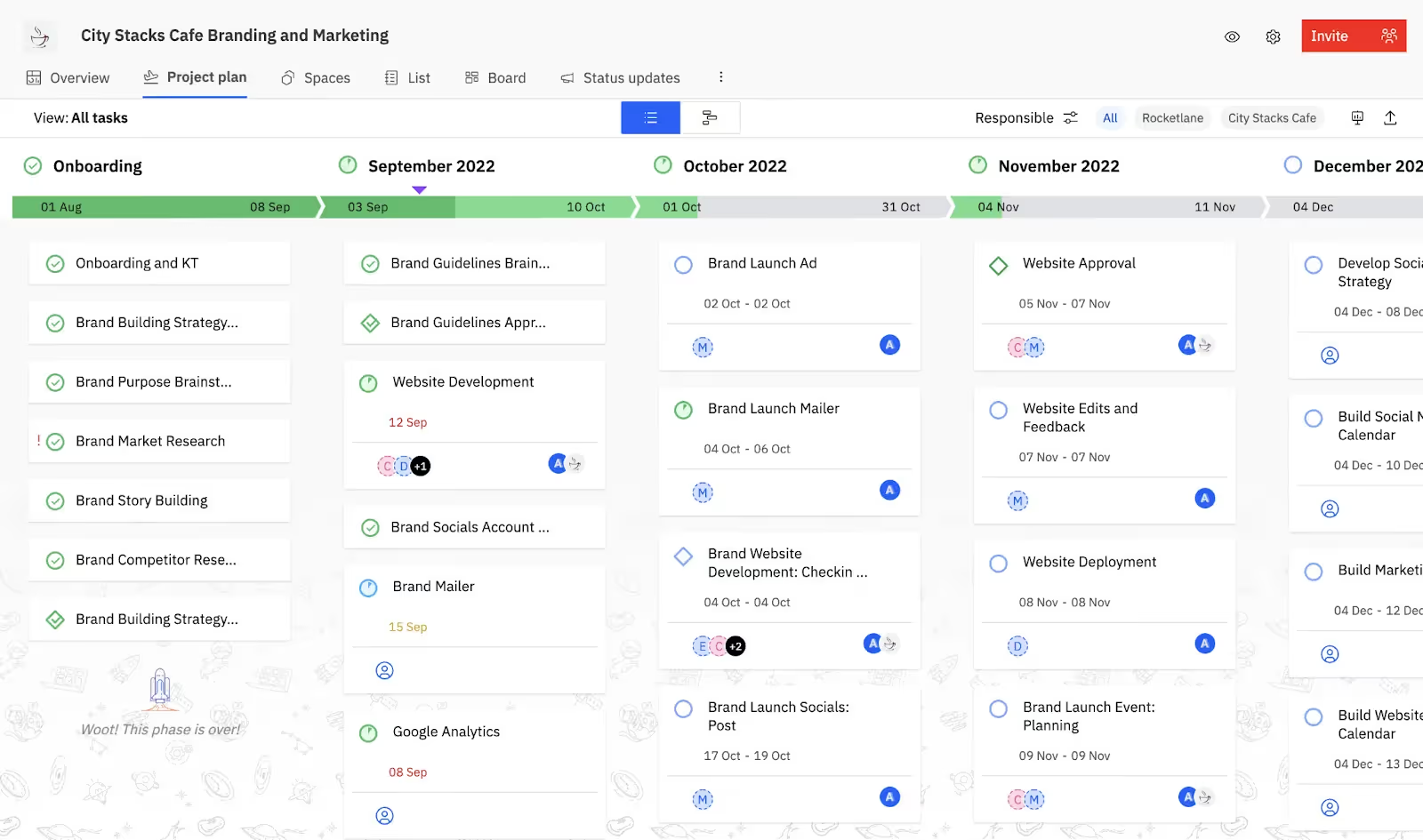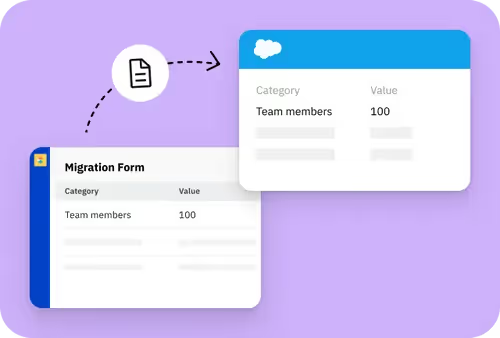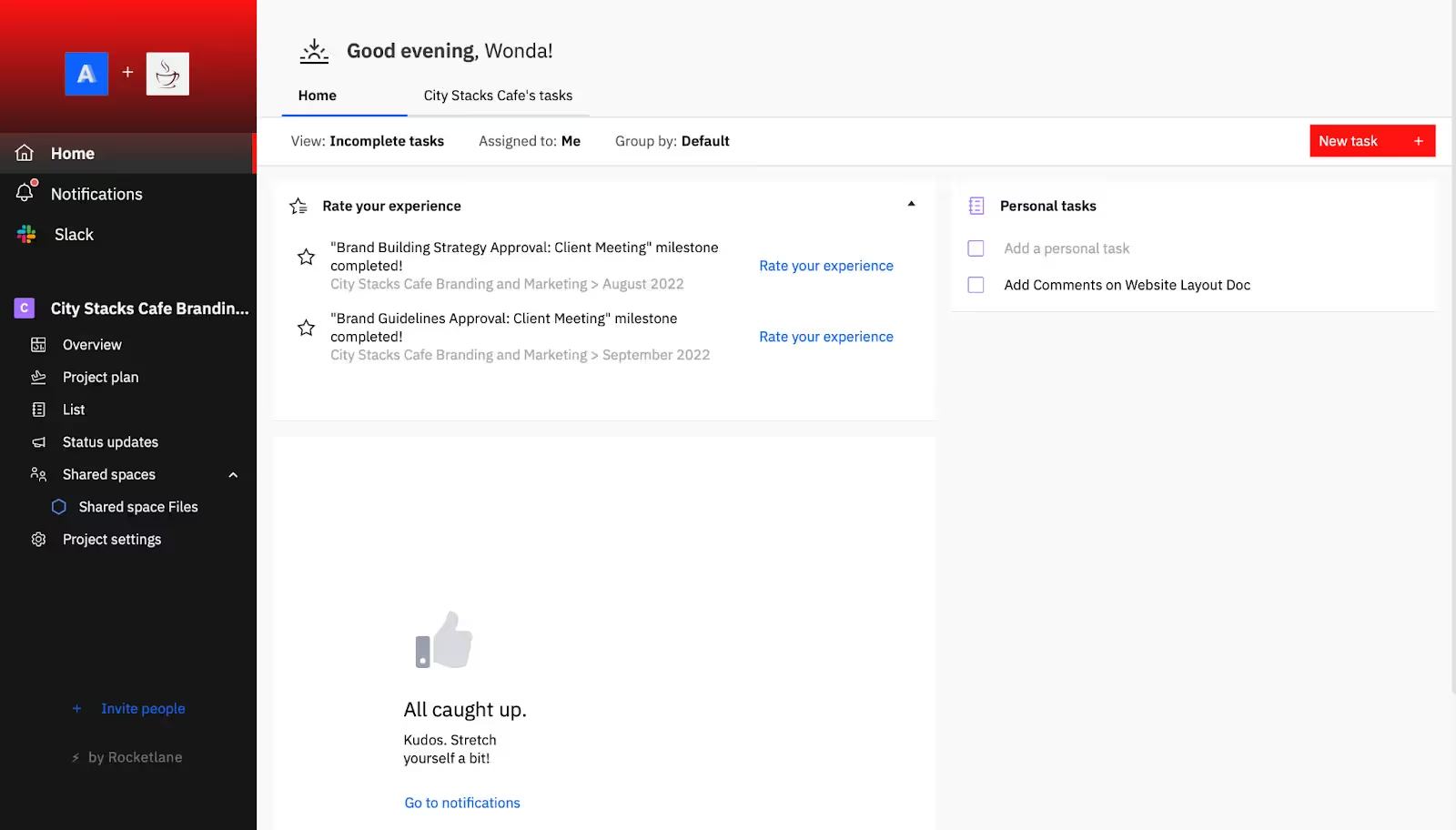A customer onboarding playbook is the secret to successful customer onboarding.
It creates a framework, or a more predictable implementation process, and gets everybody moving in the same direction.
Playbooks also serve as a stepping stone to creating truly effective customer journeys and are necessary for constantly improving the process.
So what is a customer onboarding playbook, and why is it important?
We’ll cover those questions and show you how to build your own customer onboarding playbook, determine the best type of playbook for your needs, and the six leading plays to include.
Finally, we’ll answer a few commonly asked questions about customer onboarding playbooks and show you how the right tool can help you create a champion playbook.
{{demo}}
What is a customer onboarding playbook?
A customer onboarding playbook is a comprehensive reference guide that clearly outlines the protocols, phases, and requirements of the onboarding process for all stakeholders. It’s sometimes referred to as a customer success playbook.
It defines each step of the onboarding process and offers detailed guidelines for teams to follow.
It also helps teams identify best practices for refining and improving client onboarding processes.
Why is a customer onboarding playbook important?
Customer onboarding is the most critical step in the customer lifecycle. The goal of onboarding is simple: To get the customer set up with your product/service and accelerate their time-to-value.
But its execution is complex.
Why?
Drawing up an onboarding process tailored to each customer's unique needs is an uphill task.
That’s where playbooks can help.
Including a playbook as part of your onboarding success plan can help ensure customers get off to a great start with your solution.
They’re an ultimate guide and best practice manual, helping teams navigate the onboarding process smoothly and delivering a consistent customer experience.
Why does this matter?
If your customer onboarding process is lacking, it doesn’t matter how well your sales process goes; it can still cause customer churn.
On the other hand, a well-planned playbook can help you:
- Establish accountability
- Drive and scale product adoption
- Easily track success with specific metrics (e.g., customer health score)
- Improve overall customer service
- Reduce customer churn
- Drive account expansion
Now that you understand the importance of a customer onboarding playbook let’s see how you can start building your own.
How to build your own customer onboarding playbook
When creating a customer onboarding playbook, remember that teams must tailor the playbook to suit each customer, and there is no one-size-fits-all methodology.
Determine the best onboarding playbook for the customer
First, you’ll need to decide on the type of playbook your customer needs:
- High-touch onboarding: This approach relies heavily on human interactions and offers personalized engagements throughout the customer journey. These customized engagements may include in-person meetings, 1-1 demos, phone calls, and webinars from a dedicated Customer Success Manager.
- Low-touch onboarding: The low-touch approach includes minimal involvement from the onboarding team. Instead, customers use existing resources to set up the product themselves. Examples include webinars, emails, how-to guides, FAQs, and troubleshooting documents. Customer support is usually available via email, phone, and chat, but there aren’t exclusive support persons for each customer.
- Tech-touch onboarding: This is a self-serve approach. Here, users sign up, play around with the product on their own, and find value instantly. Automated emails, in-app pop-ups, and video tutorials are typically used here.
Once you’ve determined the best approach, you can draft your playbook using these plays:
Top 6 plays for your customer onboarding playbook
Here’s a list of 6 top plays you can effortlessly include in your customer onboarding playbook.
Play #1: Facilitating seamless handoffs
After the Sales Team has taken the customer over the dotted line to sign that contract, it’s their time to celebrate. The customer is also happy to have found a solution that makes their lives easier.
But what’s next?
Well, the customer won’t always stay happy with just a signed contract.
After the sales process, they’ll expect to start seeing value from their purchase soon.
This means the pre-sales and Customer Success teams must collaboratively formulate the perfect customer onboarding plan to delight the customer in the shortest possible time span.
The first step in the plan is to nail the handoffs, be it the Sales to Customer Onboarding, Sales to CS team (Customer Service), or Sales to Customer Success handoff.
Your handoff document should:
- Detail how the customer’s current onboarding and implementation process is set up.
- Outline the customer’s current tech stack, pain points, use cases, demos, feedback, etc.
Ensure that the information flow from the CRM to your tool is synced, automated, and seamless.
Also, ensure that this does not eat into the time of your client onboarding or customer success team.
The average CS team wastes 8-10% of their time manually creating projects on tools and collecting information from the Sales Team.
Check out our report on The State of Customer Onboarding 2023 for more eye-opening stats.
So what’s the solution?
Invest in the right customer onboarding software at the right time to set your team up for success.
For instance, Rocketlane integrates with Salesforce to enable seamless handoffs.
Play #2: Nailing kickoffs
Now, it’s time for the kickoff meeting.
This is the first official meeting between a Project Team and the internal or external stakeholders.
The kickoff preparation involves the following activities:
- Putting together the draft project charter
- Ensuring all attendees are aware of their roles in advance
- Creating a solid agenda and deck for the meeting
The kickoff aims to get the right people in the room and get them moving in the right direction from the start.
It’s the best way to set expectations, understand project goals and Key Performance Indicators (KPIs), align with customers on desired outcomes, and develop a communication plan with stakeholders. The kickoff meeting typically takes place after the statement of work has been finalized.
Take the time and effort to understand the customer’s needs and what they are trying to achieve with your solution.
After reiterating and prioritizing what the customer wants to achieve, walk the customer through the onboarding journey and the duration of each phase, and get customers to co-own the success criteria for the entire onboarding process.
Psst… Here's a comprehensive guide on prepping and pulling off the ultimate kickoff meeting for a customer onboarding project.
Play #3: Drawing plans
Post-kickoff, it's time to set up an account for the customer on your product.
Let your customers experience the product firsthand, as experiences tend to stick for longer. Based on their current processes and expectations, create an onboarding plan for them.
If customers already have pre-existing plans and processes, recreate them on the product.
However, while designing a customer onboarding strategy, a long onboarding checklist will not save the day.
Then, what should you do?
Divide the customer onboarding checklist into a weekly plan.
Lay out a sequential path for customers, explaining how you’d like them to approach these steps.
The 'Waiter vs. Doctor' is another approach you could consider.
As the ‘waiter,’ you present customers with the options and let them make their choice.
As the ‘doctor,’ you review their inputs and prescribe the best option.
For example, based on their list of unique needs, you could recommend the best feature bucket and payment plans for the customer’s team. This might work better than an a la carte approach where the customer is free to choose any or all product features in their plan. Your tailored recommendations can enhance the product’s usability.
Remember that it’s vital to customize the onboarding experience for each customer.
But this doesn’t mean you have to start from scratch for every customer onboarding!
You can tailor Rocketlane’s customer onboarding template options to suit your company’s brand and requirements. This way, you have a standardized base to help get the ball rolling quickly.
Watch this video for more on creating dynamic templates in Rocketlane:
Play #4: Ensuring solid implementation
Next up is helping customers figure out the detailed configurations for the product setup, this is critical to customer retention.
Once they are familiarized with the basics and are ready to implement your tool, take a workshop approach to their product configurations.
How will this approach help your customer success strategy?
- It will act as a forcing function for customers to get things done.
- It will also showcase you as a partner rather than a vendor to your customers.
Don’t believe us?
Gainsight says this approach helped them to reduce their customer onboarding time by 66%!
Another way to get moving at the right pace is to make the customer point of contact the hero of the project and deliver value so that the customer wins in more ways than one.
Why not conduct a sprint-review-style demo to the steering committee (leadership team)?
This could be done at the end of every week or every two weeks to showcase the work done.
This keeps all parties clued in, adding transparency and trust to the process.
Play #5: Planning smooth go-lives
In project management or implementation, a go-live is when end users start using a product/service.
You’ll need a go-live plan to ensure this goes off smoothly.
For this, you’ll need optimum preparation, timely action, and a contingency plan to deal with unexpected issues.
Here’s how to ensure a successful go-live:
- Involve all stakeholders from the start to define exactly what go-live means for the specific customer.
- Consider the transition to Customer Support before the go-live date, including creating a transition or handoff plan.
- Before go-live, ensure that all User Acceptance Testing (UAT) items have been closed or logged for future action.
- Set up a list of people you can contact in case any problems or escalations arise during go-live.
Remember, the go-live is not a moment for fireworks yet.
At this point in the customer journey, they are happy that they can use your solution, but they aren't celebrating. The celebration happens only when they realize value during the product adoption stage.
Towards the end of the onboarding, encourage each new user on the customer side to do a 'reverse demo' of your solution back to your onboarding and Customer Success Team.
The reverse demo helps you understand how customers use your solution to recommend best practice advice or required tune-ups.
This can help you ensure the customer has understood the training content and can now see value.
Play#6: Driving adoption
The customer onboarding process is not complete without the customer fully adopting your solution — this is key to account expansion and long term success.
So how do you successfully drive adoption?
At the end of your implementation, invite users and business leaders from the customers’ side to an ‘Onboarding Day’.
Focus on ending things on a celebratory note and driving excitement for users. This will subsequently help in improving adoption, customer satisfaction, and customer retention.
Or, as a one-off event for enterprise or large user accounts, gamify the adoption.
See which team or new user group on the customer’s side is able to showcase the best results using the product.
Find specific metrics and key performance indicators that showcase value delivered contributing to customer success, for example, customer health score. You can focus on these so that the team's goal becomes to make your product succeed in their group.
Now, let’s answer a few burning questions you may have on customer onboarding playbooks.
Customer onboarding playbook: FAQs
These are some of the most commonly asked questions about customer onboarding playbooks:
1. Who needs a customer onboarding playbook?
Customer onboarding playbooks are commonly used by SaaS and professional services industries.
Whether you’re a SaaS company or not, playbooks are useful for any business frequently onboarding and familiarizing new customers with products or services.
Creating a customer onboarding playbook is helpful for any business that wants a new customer to:
- Find value in a product quickly and continue using it.
- Adopt product features swiftly and with minimal friction.
- Upgrade their plan. For example, you want a new client to move from a free plan to a paid subscription.
2. What makes a good customer onboarding playbook?
A successful customer onboarding playbook should have:
- Standard operating procedures: The ideal onboarding process should include standard operating procedures that can easily be laid out and consistently applied to all customers.
- Adaptability: Although your onboarding playbook is a set framework, each customer’s onboarding journey may differ. You should still be able to adapt your playbook to each customer’s unique needs and the type of services you’re offering them.
- Clearly defined phases, milestones, and requirements: Your onboarding playbook should explicitly define each phase in the onboarding process. This should also include each phase’s milestones and requirements so your team and the customer can stay on the same page throughout the onboarding process.
3. Do you need multiple customer onboarding playbooks?
No, you don’t need multiple customer onboarding playbooks.
However, since different customers have different needs and problems they’re trying to solve, a universal playbook for every customer isn’t always the best approach.
So what’s the workaround?
Create a customizable customer onboarding playbook.
You can then adapt the playbook to suit each customer’s unique needs.
Create a winning customizable playbook with Rocketlane
Here’s how Rocketlane can transform your customer onboarding with customizable playbooks:
1. Use project templates to interact with clients
With Rocketlane, you can maintain consistency and standardization throughout the customer onboarding process with project templates.
Create a collection of templates to add to your playbook and use them when interacting with customers.
You can also tailor project templates based on customer segmentation.
Not only does this save you time, but it also maintains a quality standard across the board for your entire customer base.

2. Set up different tasks for different onboarding and ongoing services
You should set up and customize different tasks for different onboarding phases and services you’re offering.
Why is this important?
Every project phase is made up of various tasks which involve resource delegations and other project aspects. If your tasks aren’t planned and organized, managing these tasks will be near impossible.
The solution is to have each task and all related interactions easily categorized within one space.
With Rocketlane, each task can also be populated with vital data points, such as:
- Assignees
- Start and end dates
- Attachments
- Subtasks
- Task dependencies
- Conversations
This way, you can ensure the long term success of your customer relationship.

3. Add forms or client onboarding questionnaires
At the start of the onboarding process, your team spends loads of time processing and organizing customer data and requests, all while juggling the onboarding process for multiple customers simultaneously.
Typically companies collect and organize customer data using a combination of apps, third-party forms, and spreadsheets.
The problem?
It’s tedious and time-consuming.
It’s error-prone and can also lead to burnout.
What’s the solution? .
With Rocketlane’s form builder, you can create functional, customized forms for intakes, data migrations, customer surveys, and knowledge transfers like a client onboarding questionnaire.
The form builder is a faster, more efficient way to collect and organize new client information from the start. It also allows you to branch into the right follow-up questions with conditional logic that personalizes the respondents’ experience.
Not only is this a more convenient and efficient way to gather data. But it allows you to provide a better customer experience than the old-fashioned long email or worse, the awkward phone call.

4. Customize what you want stakeholders to see
Your customers’ onboarding experience lays the groundwork for your customer relationship, so it’s critical to make onboarding as smooth as possible.
One way to do that is by providing clear visibility for both your team members and customers.
With Rocketlane, teams can see the task status, progression, current and next steps, and potential risks in every project.
It also lets you decide each customer’s level of visibility to ensure they only have as much access as required.
You can equip customers to track projects, maintain communication, and give feedback as needed.

Optimize your customer onboarding process today
A customer onboarding playbook is a baseline for all your future onboardings. From this vantage position, you can quickly assess and effectively pinpoint areas that require improvement or attention.
It also acts as an instructional coach to help you reflect on what’s working and what’s not. The team will then have a consistent process, and they’ll be able to gauge and mitigate risks that may arise during each customer onboarding.
Want to hire a coach to help with your customer onboarding playbook?
Rocketlane is the only customer success platform you’ll need for next-level onboarding.
So say goodbye to customer churn!
{{demo}}
Further Reading
- Find customer onboarding challenging? It won’t be after you’re done with our walkthrough of the process!
- Mark the beginning of a productive and profitable partnership with an effective client onboarding process
- These client onboarding best practices will help prevent losing the customers you worked so hard to earn
- Looking for some fresh customer onboarding stats? Explore the latest trends calling the shots in the industry



















